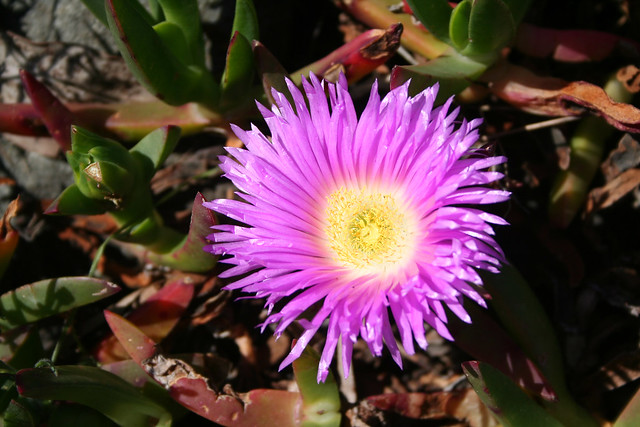Carpobrotus rossii Cladus: Eukaryota Carpobrotus rossii, commonly known as Karkalla or Pig Face (Western Australia), is a succulent coastal groundcover plant native to southern Australia. Karkalla leaves are succulent, 3.5–10 cm (1.4–3.9 in) long and 1 cm (0.4 in) wide, curved or rarely straight. Flowers are light purple in colour, and 6 cm (2.4 in) wide. The globular purplish red fruit is about 2.5 cm (1 in) long and 1.5 cm (0.6 in) wide.[1] Distribution The species occurs in the states of Western Australia, South Australia, Tasmania and Victoria.[2] Found year round in large patches covering sand dunes close to the ocean, due to its hardy nature and salt resistance.[3] Uses Aboriginal people eat the fruit traditionally, fresh and dried. The salty leaves were also reported to have been eaten with meat. Carpobrotus rossii (pigface) extract has significant in vitro antioxidant, antiplatelet and, potentially, anti-inflammatory activity.[4] References ^ Elliot, W.R., Jones, D.L., Encyclopædia of Australian Plants, Vol. 2, 1982 ISBN 0-85091-143-5 Source: Wikipedia, Wikispecies: All text is available under the terms of the GNU Free Documentation License |
|

